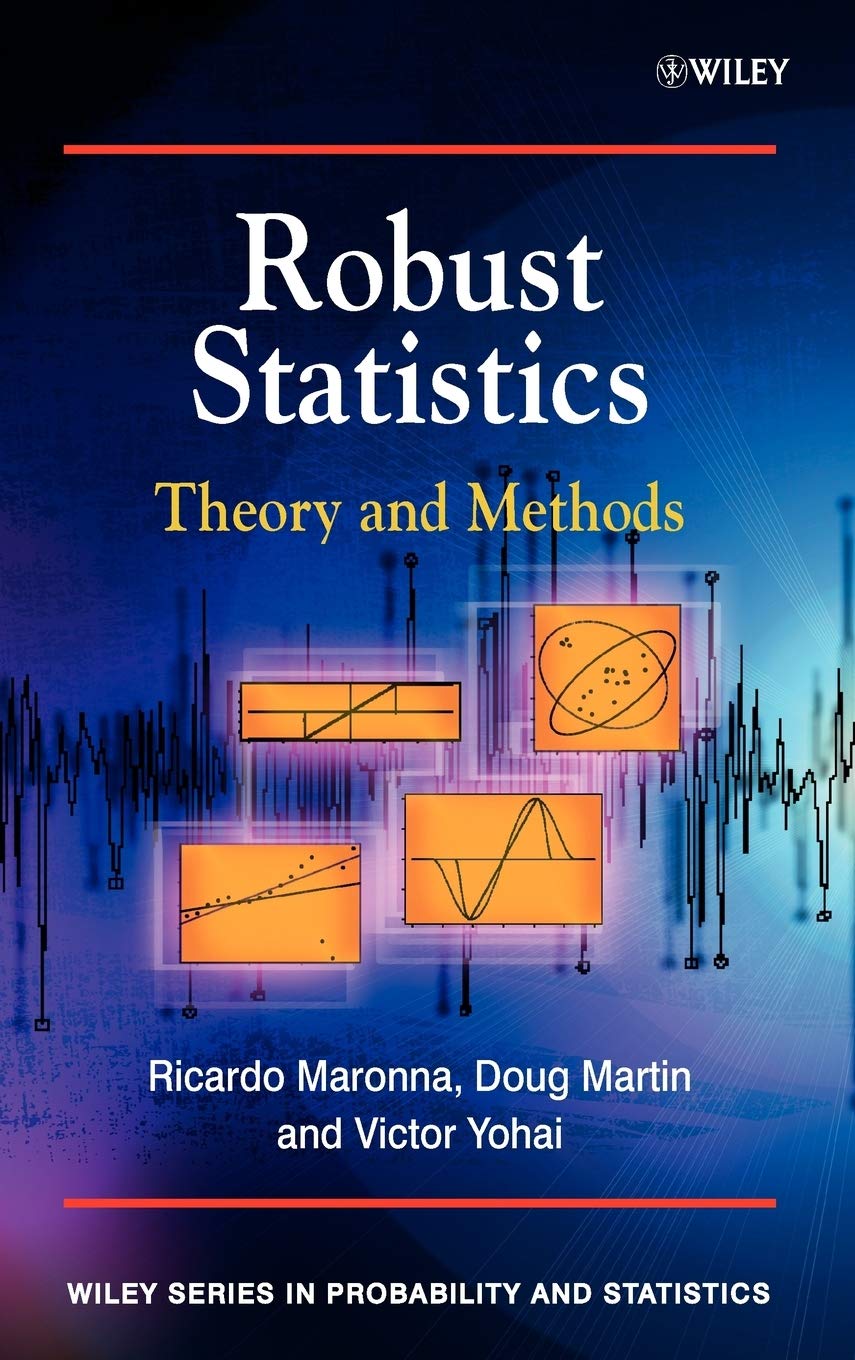

Robust Statistics: Theory and Methods
G**N
A real outlier in this literature
This book is clearly written. The structure of the area is laid out succinctly and methods that are useful discussed and compared from a practitioner's point of view. Unlikely enough rigor to satisfy the rigor police, but enough that one can check assumptions and modify proofs if needed (though not under the weakest possible conditions). Should someone have a set of data with outliers and/or heavy tails he or she can figure out exactly what to do and where to go to get code.
D**E
A quality textbook with some notable faults
This is probably the book that the field of robust statistics needed - a user friendly textbook that actually teaches rather than going through a few quirky topics followed by some unbearably cerebral mathematics. Maronna et. al. have clearly aimed to be useful and relevant, and have mostly succeeded, but watch out for the following:1. There are no answers to questions. Furthermore, there are virtually no basic "calculation-type" questions, such as calculating the MADN (normalised median deviation about the median) for a simple distribution like f(x) = 4x^3 on [0,1]. Many of the questions are deep, and certainly not comprehensive. It is fairly clear that the authors, although having included many interesting and relevant chapter questions, have relied on questions that came up in their own investigation, rather than independently developing useful problems for students.2. The notation can be confusing at times, not least because they ditch the traditional use of X for a random variable, and x for a value that it can take. Further, many of the definitions (e.g. for a psi function) are in some out of the way place, so it is not clear half the time what the assumptions are behind an explanation or theorem. Much of the time they give a definition, and don't quite adhere to it, like defining psi(x) as an odd function, then giving many examples of psi functions that are not odd (though admittedly they acknowledge it when this happens). The also do not uniformly distinguish between vectors and reals, such as on page 5 where they combine boldface-x (a vector) with Med(boldface-x) (a real number). This kind of thing works in computer programs, but to me at least looks lazy in a pedagogical work (which I assume this is meant to be).There are so many little things wrong with this book that I cannot go into them, but it is still the best I have seen, and I can heartily recommend it. There is a good sense of structure, good choice of topics as far as I have read (I'm admittedly not half way through it), and generally clear presentation, allowing for some flicking back and forth which could have been avoided. I recommend going to the chapter problems first and trying as many of them as possible before going through the text, so you don't drive yourself mad dealing with irrelevant points.
M**K
comprehensive treatment of robustness
I do not agree that this text is a sequel to Huber's classic book on robustness. Huber has recently produced a second edition to the book which is more appropriately called a sequel as it mainly updates the first edition.Maronna, Martin and Yohai do much more here. Hampel's book takes an influence function approach to robustness. Huber's deals more with constrained maximization such as M estimation. Most books on robustness deal with the problems of location and scale and perhaps a little on multivariate robustness. These author's cover all approaches. They provide a good mix of theory and applications. They include multivariate analysis, generalized linear models, regression and time series. Time series robustness is a strength of this book as these authors have contributed a lot to that theory.In addition to providing a modern and comprehensive outlook on robustness the authors get into the practical issues of computation providing a chapter on numerical algorithms and the another on the implimentation of robustness in the SPlus software.Outlier detection and removal is another approach to robustness. First you remove outliers and then you perform classical statistical methods on what is left. This is probably not as good of an approach to robustness as the alternatives. But outliers play a role that is measured by influence functions and reducing their influence rather than eliminating them completely is often the goal of a robust procedure.This is a one-of-a-kind book on robustness and is very much worth having im your library if you are a professional statistician.
S**Y
An update literature on robust statistics
This book is a sequel to the classic text book on Robust Statistics by Huber. The authors have updated new materials appearing in the literature in the past 20 years or so. The book is some what more balance between theory and practice and there are many off-the-shelf algorithms for use. I think most importantly, it tells applied statistician when and what to use in a concise way. Of course, if one wants to further dig out the theory, it is probably best to follow up the reference.
S**T
Reader Friendly
I strongly recommend this book over Hampel et al.'s book on robust statistics, which is far too mathematical and abstract for most readers.Having said that, I still don't think there is a truly accessible book on robust statistics, which is too bad considering how useful -- even vital -- the topic is for the everyday engineer, scientist, or applied mathematician.
TrustPilot
1天前
2 个月前